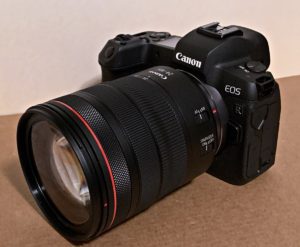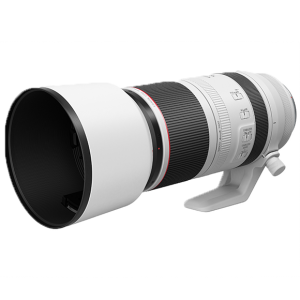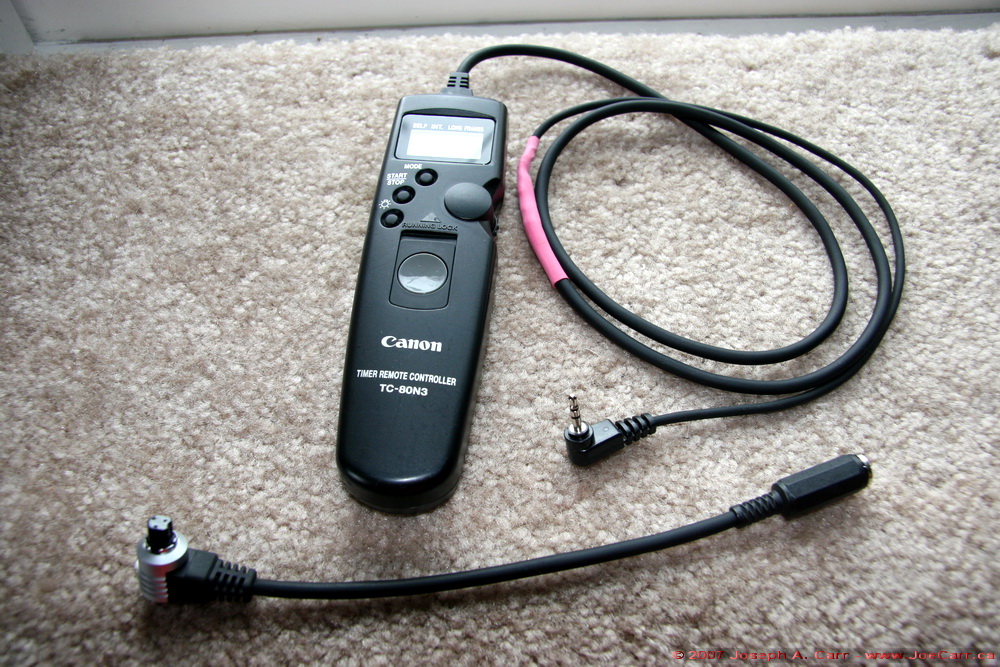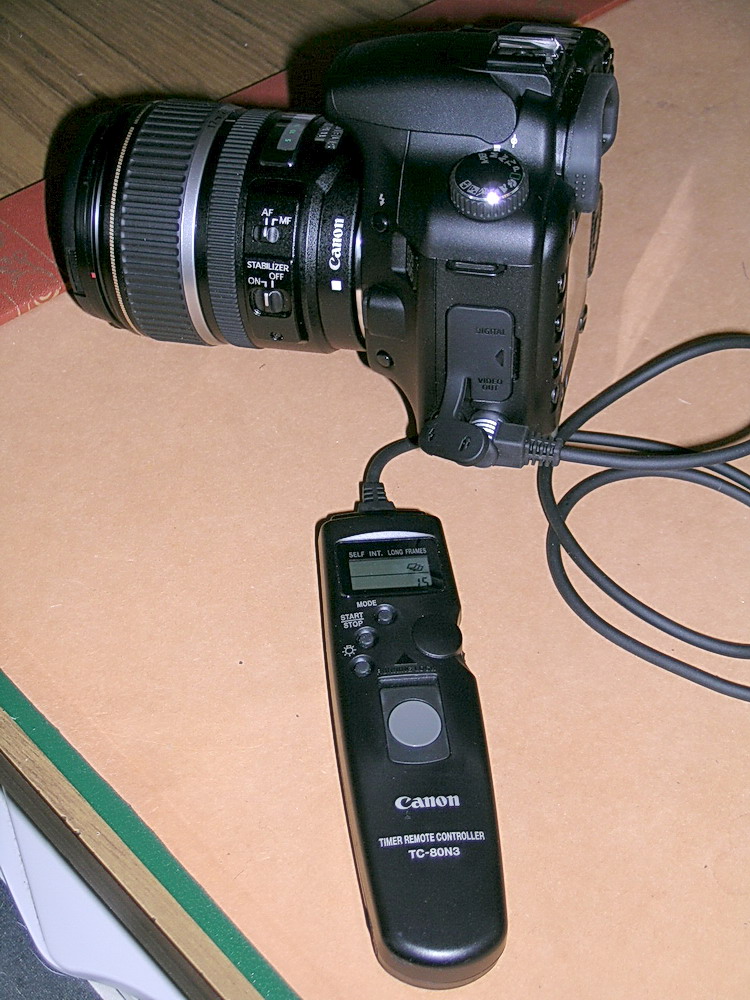Astronomical Imaging Hardware
The latest technology often includes noise reduction and more sensitive sensors, making digital cameras very useful for some types of astrophotography. Canon, Sony and Nikon seem to be most-favoured by amateur astro-photographers.
Canon L-series lenses offer excellent optics for astronomical use, where we push optics to their limits (and sometimes beyond). As Canon says “these lenses use special optical technologies [such as] Ultra-low Dispersion UD glass, Super Low Dispersion glass, Fluorite elements, and Aspherical elements to truly push the optical envelope.”
Canon EOS digital SLR cameras and Canon L series telephoto lenses
I use two unmodified Canon cameras to capture astronomical images: Canon R (30 megapixel) and Canon R5 (45 megapixel), as well as a Canon T2i APS-C (18 megapixel) which is modified to be more sensitive to infra-red wavelengths of light. Canon led the way for using consumer cameras for astrophotography when they developed some of the best low noise high sensitivity CMOS sensors years ago.
The Canon T2i is modified by Hutech for astronomical use. There are several important features which make these cameras ideal for amateur astrophotography:
- lower noise at higher ISO
- higher ISO available (1600 for the T2i)
- more sensitive sensors
- modified for increased sensitivity to infrared (T2i)
- high resolution – 18Mpix for the T2i
- 48 bit colour when raw format is used
- mirror lockup
- fast shutter and image processing times for general operations
- fast writing of images to memory storage or through USB2 to a notebook computer
- big LCD screens
- “Live view” feature
I use all three cameras for prime focus photography on a wide variety of telescopes, including my superb Borg 101 ED f/4 Astrograph apochromatic refractor mounted on a Skywatcher HEQ5 Pro mount. I also mount the cameras and telephoto lenses directly on an Astrotrac travel mount or directly on the HEQ5 mount. The Canon CMOS sensors produce superb, low noise images. I normally save images in Canon RAW format, giving 48 bit dynamic colour range instead of the 24 bits used by the standard jpg or tiff formats. The modified T2i is particularly effective when photographing emission nebula, however I also use it when photographing celestial objects that do not emit much infrared since I have it permanently setup for astronomical photography.
The Canon RF 100-500 L series zoom telephoto is a sweet lens for astrophotography, since it is like having a widefield refractor telescope, but in a smaller form factor. I first used a 400mm telephoto L-series with a Baader solar filter for my shots of the 2006 Total Solar Eclipse in the Libyan Sahara Desert. I have subsequently used several other L-series telephotos for taking wide field Deep Space images, and find them to be perfect companions for travel. The Canon Rf 15-35mm f/4 L wide zoom is great for astrophotography when a wider field of view and fast optics are needed.
The Canon TC-80N3 Timer Remote Controller is an important piece of gear for an astrophotographer such as myself. It replaces using a laptop computer to run automated sequences of shots. I have modified the TC-80N3 cable to enable control of either the 6D or T2i by cutting the cable and inserting a mini stereo jack and plug. I plug the two halves together to control the 6D shutter, or use the mini stereo plug to control the XTi shutter.
Astrophotography makes use of the fact that taking a series of images and “stacking” them will create a single resultant image with a superior signal-to-noise ratio. For example, a series of 20 images taken for 1 minute exposure time each will yield a noticeably better image (when stacked together) than a single 20 minute shot. The exposure timing and programming available with the TC-80N3 to control the Canon dSLRs saves me from doing an otherwise tedious manual timing and recording task during my astrophotography sessions in the field.



